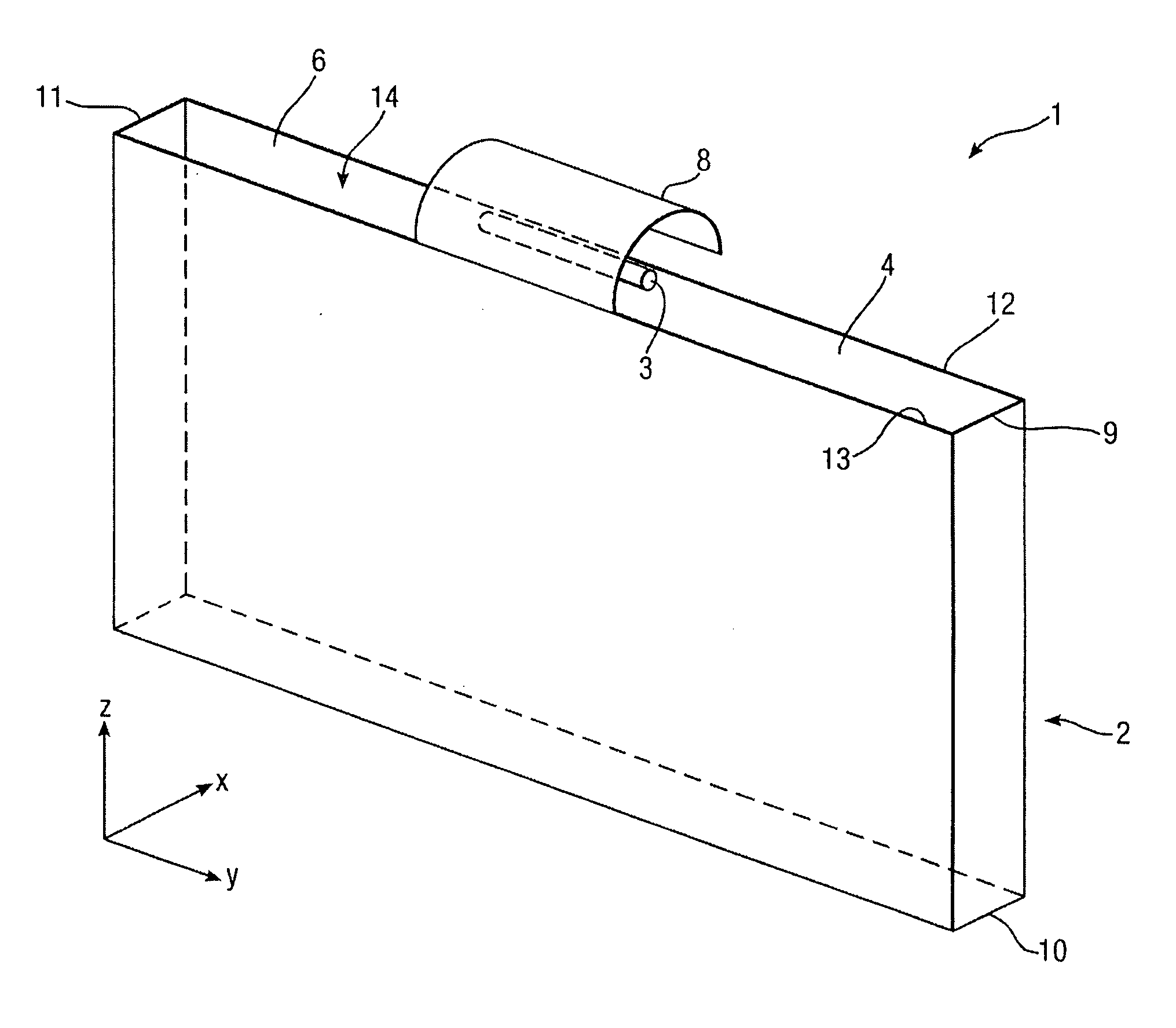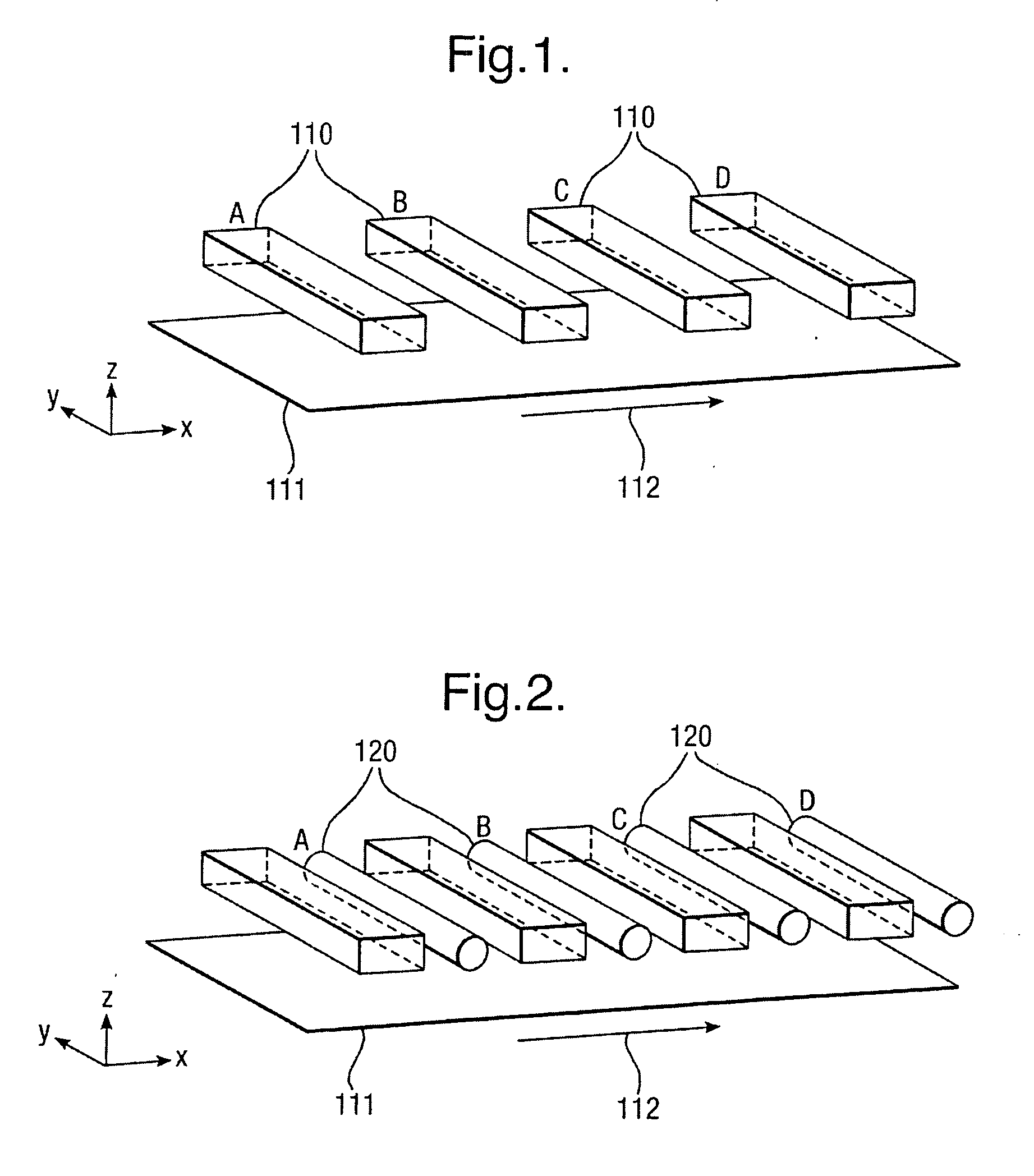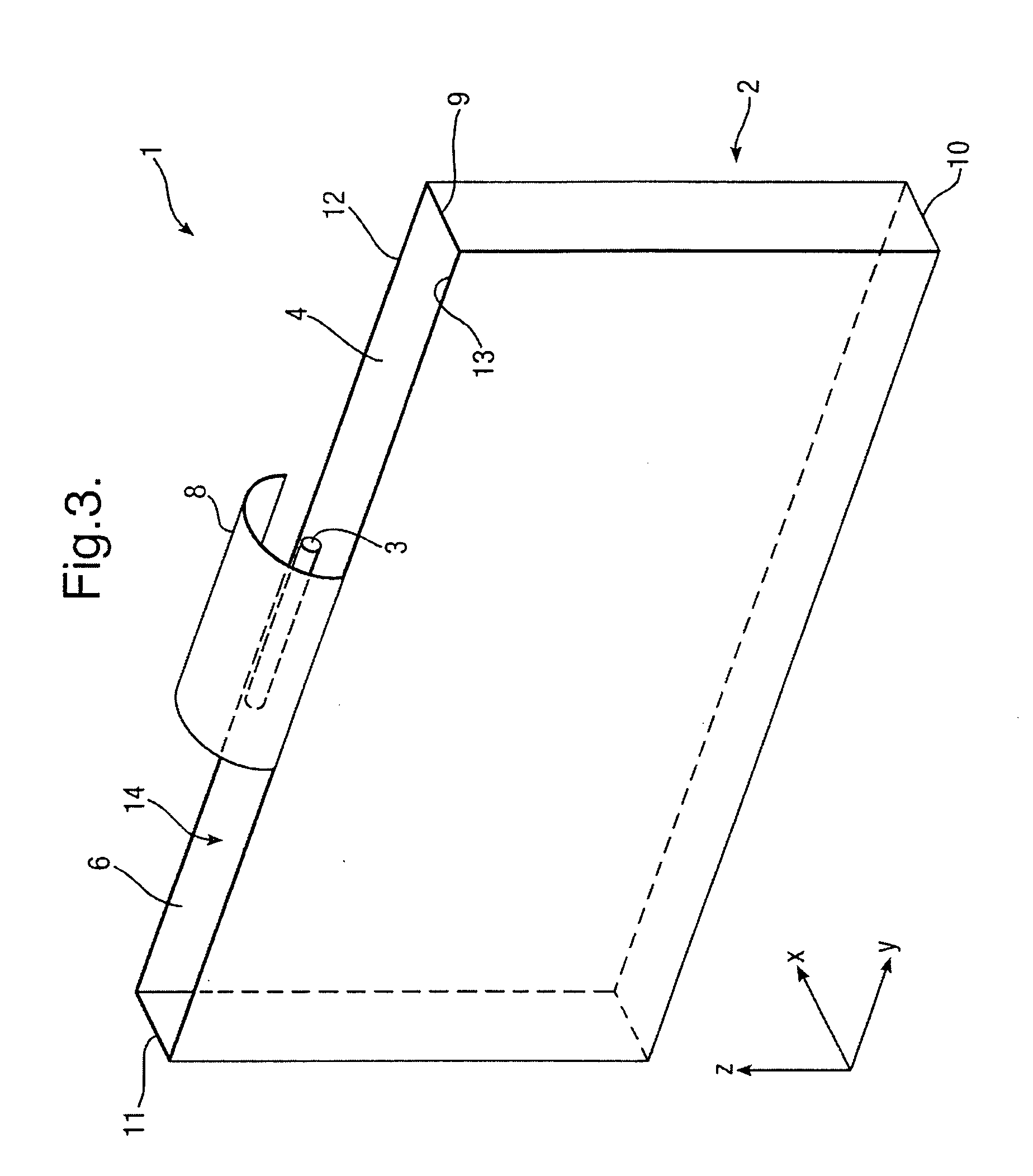Ink pinning assembly
a technology of pinning assembly and pinning plate, which is applied in the direction of printing, other printing apparatus, etc., can solve the problems of significant print aberration, significant print aberration, and sub-standard printed images, and achieve the effect of reducing the ir radiation produced and efficient us
- Summary
- Abstract
- Description
- Claims
- Application Information
AI Technical Summary
Benefits of technology
Problems solved by technology
Method used
Image
Examples
Embodiment Construction
[0028]One arrangement is shown in FIG. 3. Ink curing apparatus 1 comprises an E / M radiation source 3 and an elongate E / M radiation distribution device 2. The E / M radiation source 3 is typically provided by a doped Mercury lamp such as an Iron doped lamp generating UV radiation. The elongate E / M radiation distribution device 2 is in the form of a rectangular box 4 whose sides are defined by four simple, plane reflecting mirrors surrounding a cavity 14. These mirrors include two end surfaces 9, 11, and two side surfaces 12, 13, and an optional lower transparent surface 10 defining an outlet. Alternatively, the outlet could simply be left open. One end 6 of the rectangular box is left open to define an inlet that receives E / M radiation emitted from the E / M radiation source 3. Typical dimensions are 80 mm (length)×10 mm (diameter) for the source and 430 mm (length)×300 mm (height)×40 mm (width) for the box. It will be seen, therefore, that the length of the source 3 is considerably less...
PUM
 Login to View More
Login to View More Abstract
Description
Claims
Application Information
 Login to View More
Login to View More - R&D
- Intellectual Property
- Life Sciences
- Materials
- Tech Scout
- Unparalleled Data Quality
- Higher Quality Content
- 60% Fewer Hallucinations
Browse by: Latest US Patents, China's latest patents, Technical Efficacy Thesaurus, Application Domain, Technology Topic, Popular Technical Reports.
© 2025 PatSnap. All rights reserved.Legal|Privacy policy|Modern Slavery Act Transparency Statement|Sitemap|About US| Contact US: help@patsnap.com



